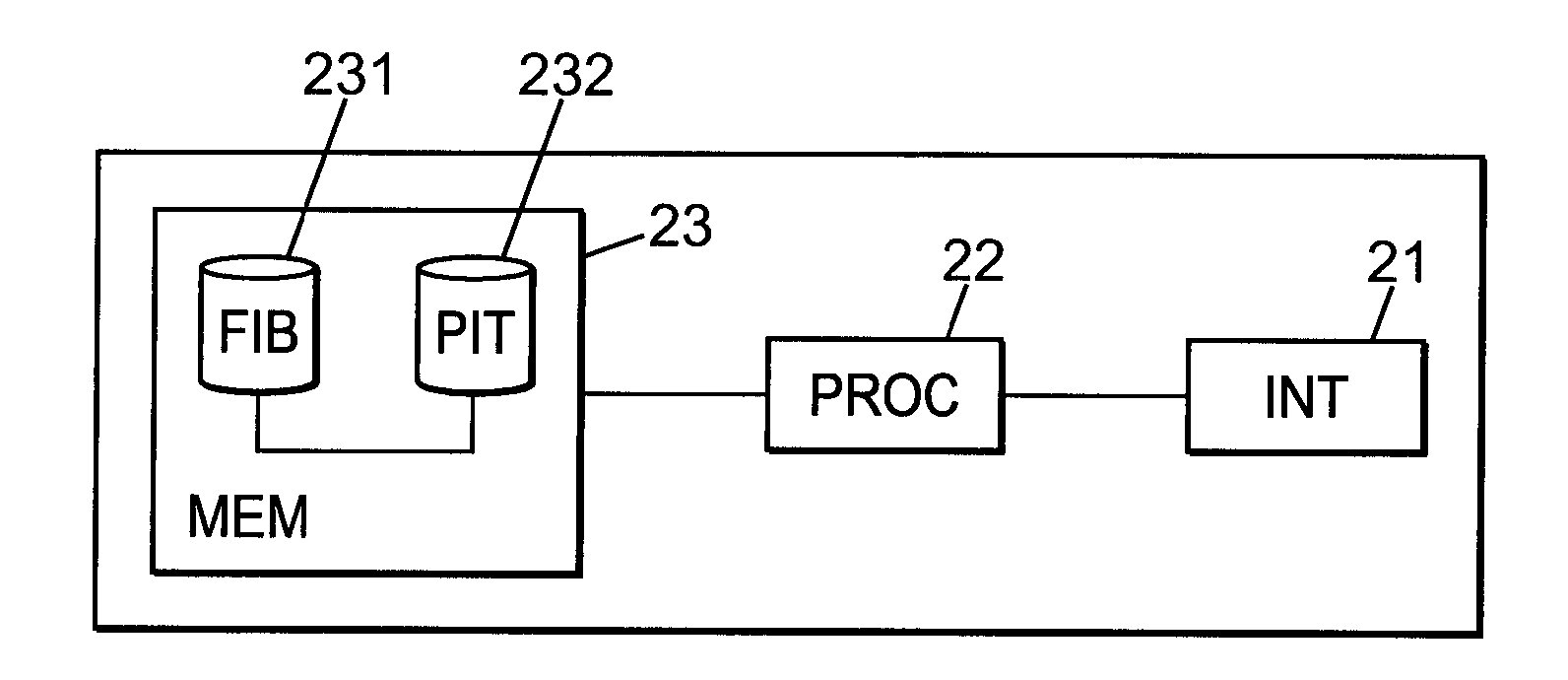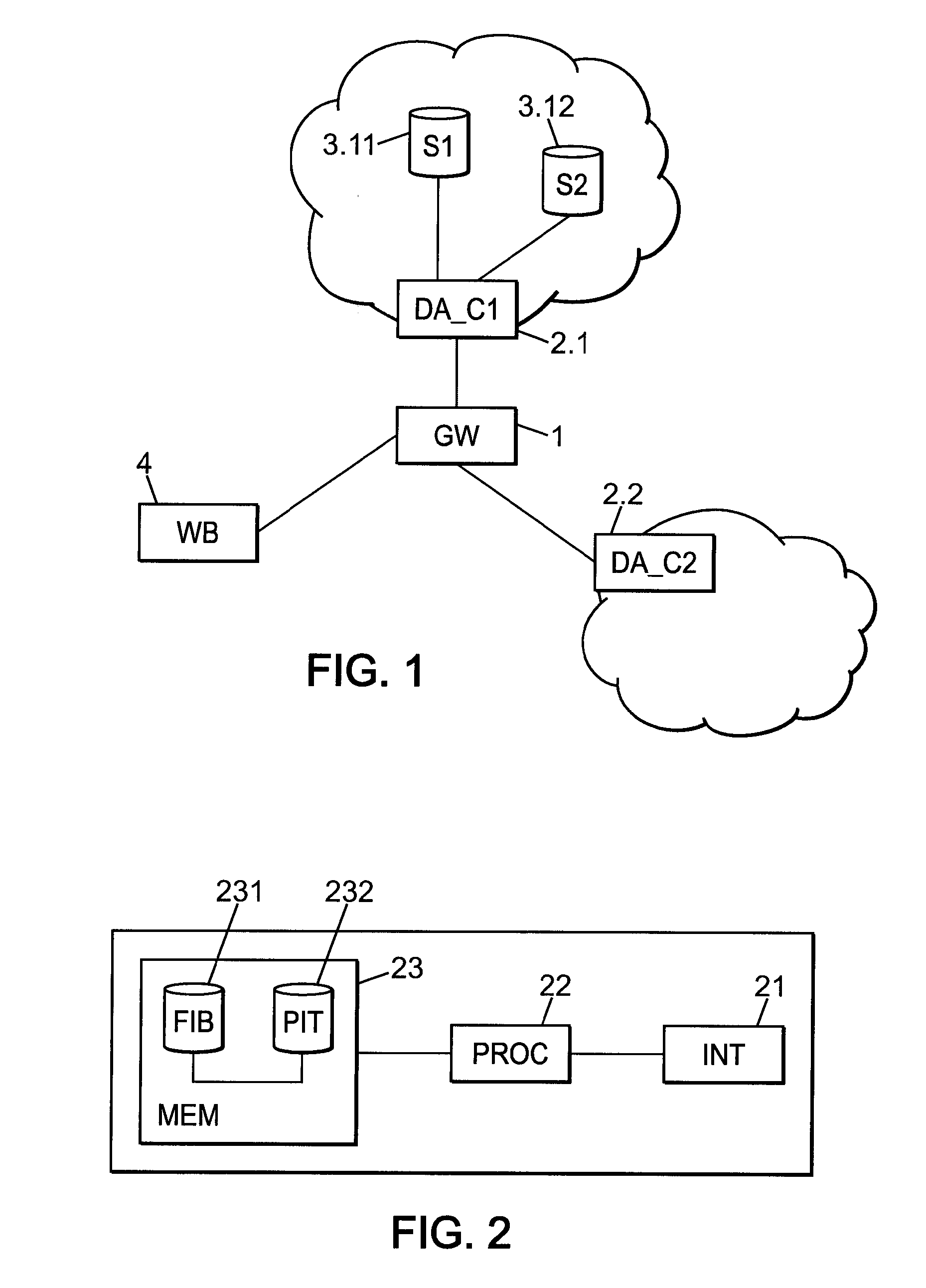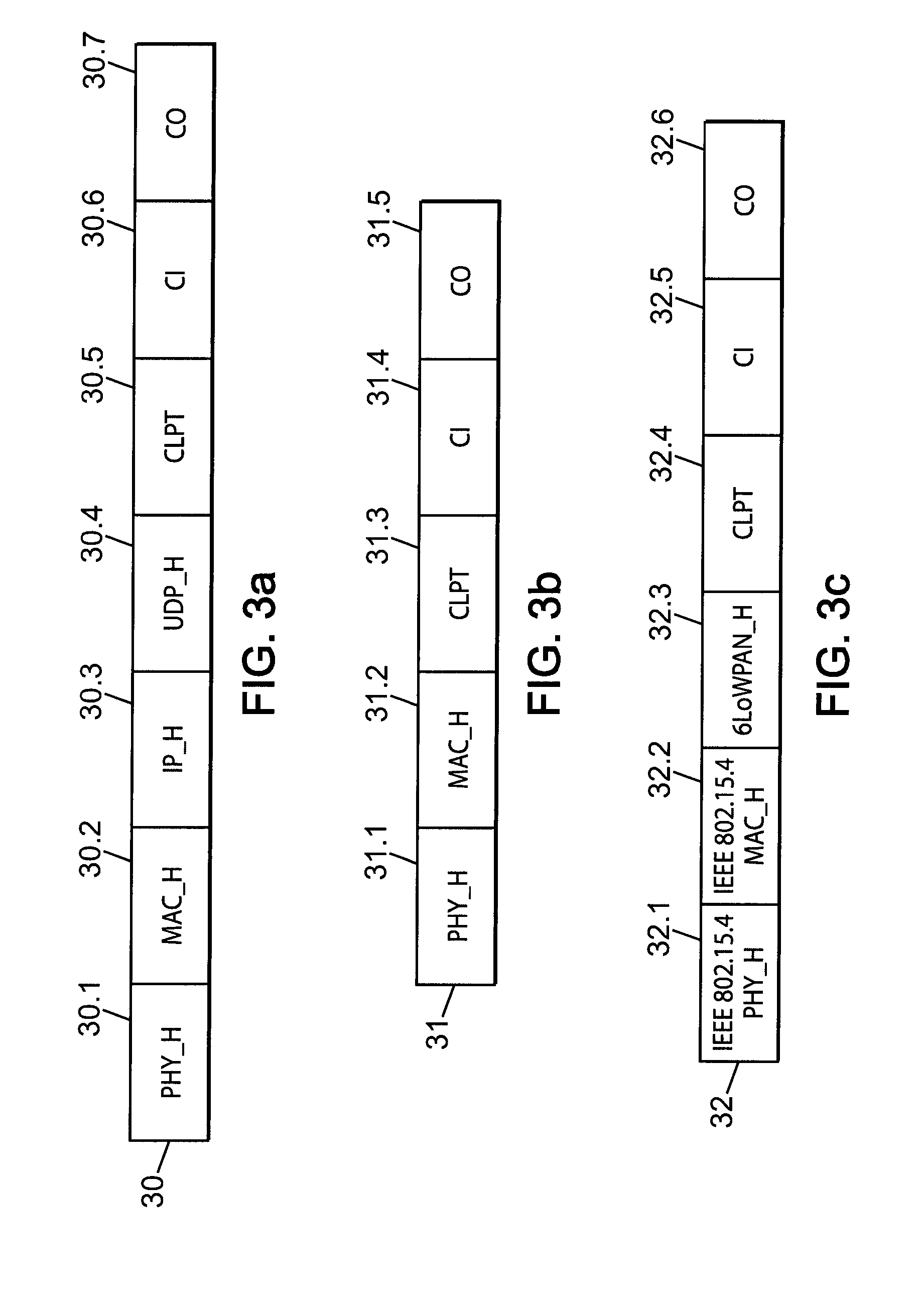Content Centric M2M System
a content-centric, m2m technology, applied in the field of communication in a m2 m, can solve the problems of complex development and expensive deployment, disadvantages of previous introduced existing solutions when used in a ccn context, and the current zigbee device is much more complicated and less cheap for the wide usage, so as to reduce the payload
- Summary
- Abstract
- Description
- Claims
- Application Information
AI Technical Summary
Benefits of technology
Problems solved by technology
Method used
Image
Examples
Embodiment Construction
[0092]Referring to FIG. 1, there is shown a content centric network for routing data according to some embodiments of the invention.
[0093]The network comprises a gateway 1, which is arranged to communicate with a first data collector 2.1, at least a second data collector 2.2 and a web browser 4 from a user terminal. The gateway 1 is arranged to receive Interest packets (and more generally a content request, which includes other types of packets, as described hereafter) from the browser 4 and to route it to one of the data collectors to which the gateway 1 is connected.
[0094]The first data collector 2.1 is for example connected to at least a first sensor 3.11 and a second sensor 3.12. No restriction is attached to the type of sensor that is considered. For example, a sensor can be a thermometer, an accelerometer, a device measuring a gas concentration in a room, etc.
[0095]The invention is not restricted to the architecture of the content centric network represented on FIG. 1. For exa...
PUM
 Login to View More
Login to View More Abstract
Description
Claims
Application Information
 Login to View More
Login to View More - R&D
- Intellectual Property
- Life Sciences
- Materials
- Tech Scout
- Unparalleled Data Quality
- Higher Quality Content
- 60% Fewer Hallucinations
Browse by: Latest US Patents, China's latest patents, Technical Efficacy Thesaurus, Application Domain, Technology Topic, Popular Technical Reports.
© 2025 PatSnap. All rights reserved.Legal|Privacy policy|Modern Slavery Act Transparency Statement|Sitemap|About US| Contact US: help@patsnap.com



